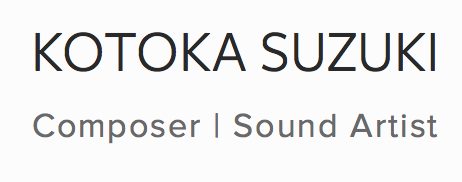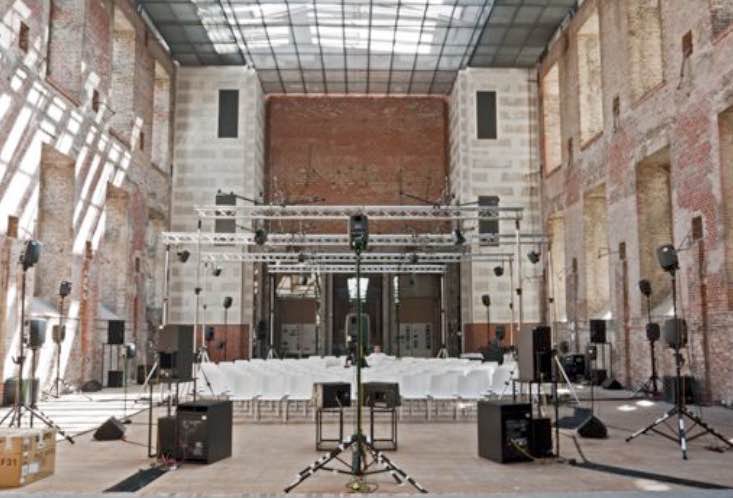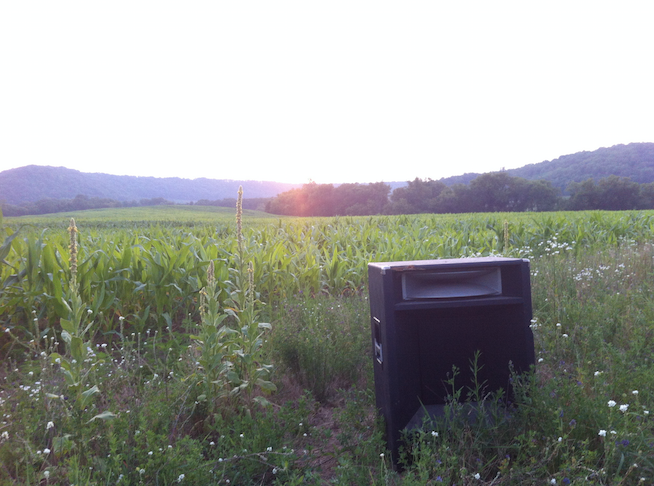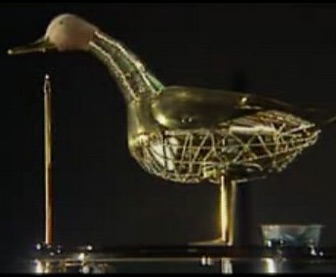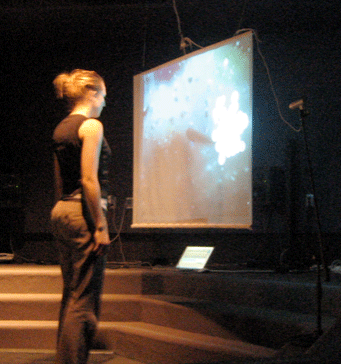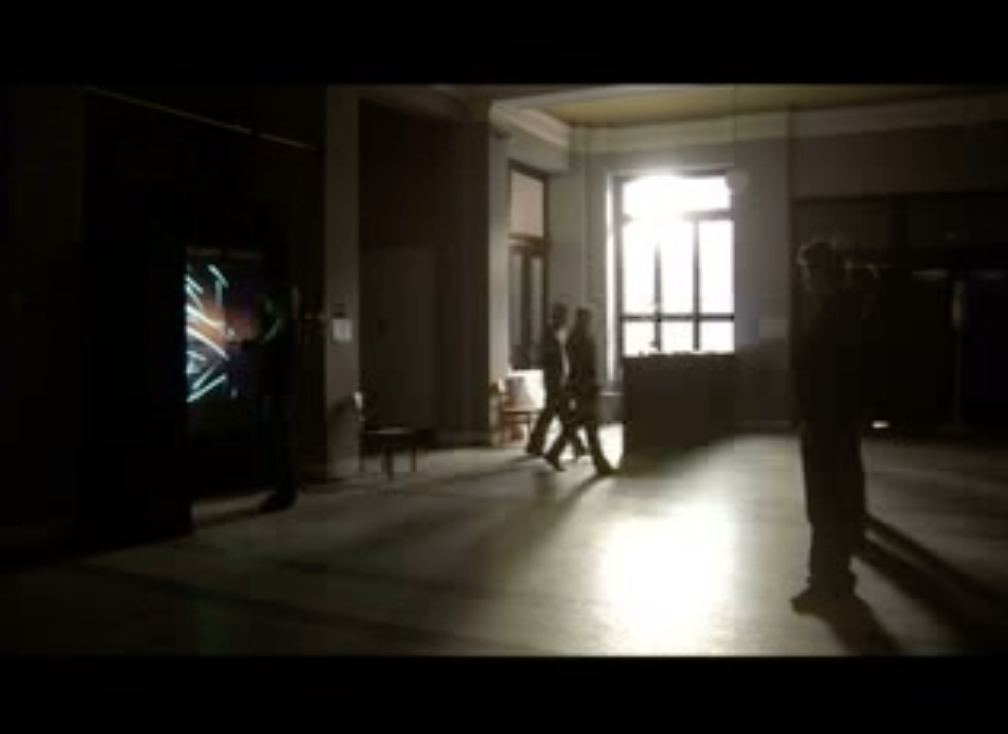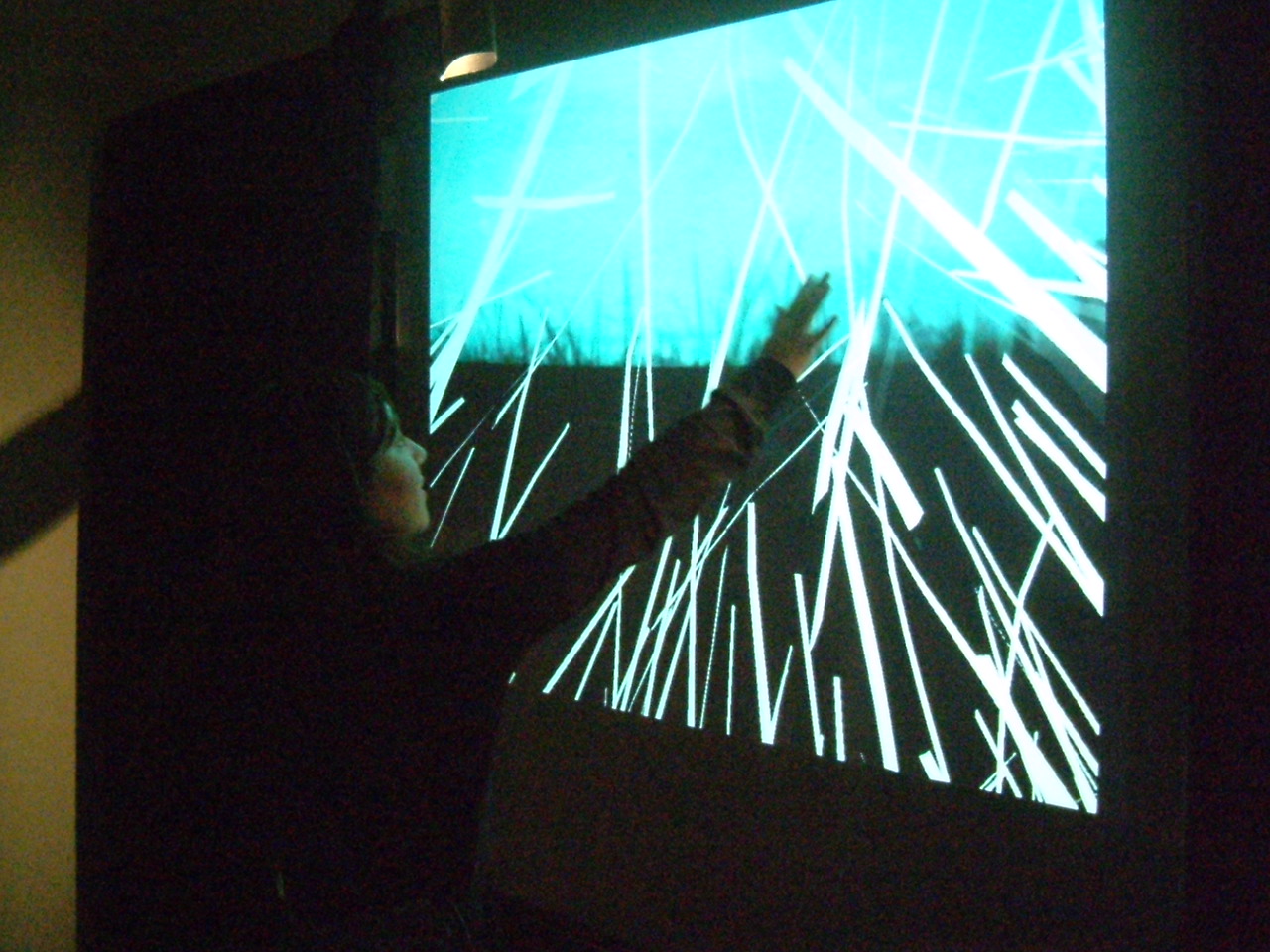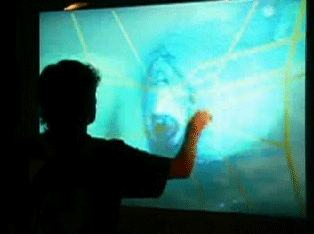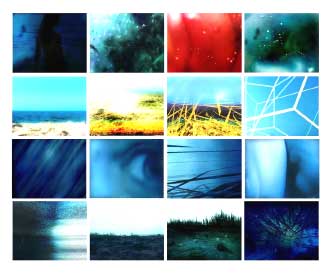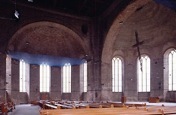//ELECTRO-ACOUSTIC & VIDEO
Anonymous Egos (2011) | 15:16
3D mapping video & live-electronics
funded by Seoul Foundation for Arts and Culture
Premiered by Intermedia Performance Lab (IPLAB, Korea)
Daehangno Arts Theater, Seoul, Korea
"Anonymous Egos" is one of four episodes from an one-hour long collaborative audio-visual work, titled "Synchronous". Each episode is composed by a different team of sound and visual artists and are performed from separated room structure installed on stage. Using multiple computers as controlling device, sound, video, and 3D images are projected and manipulated in real-time to create a seamlessly continuous immersive experience. It is an interactive performance that continuously intertwines reality and illusion of self-awareness and familiarity in a three-dimensional space.
Kotoka Suzuki, composer
Seungyon-Seny Lee, composer
Soyung Lee, video
SangChul Nam, interactive visual mapping
Automata | Mechanical Garden (2010) | 8:35
16-channel diffusion
commissioned by the Inventionen Festival, Berlin, Germany
Realized at Electronic Music Studio TU-Berlin
The word 'automata' (plural: 'automa' or 'automatons') is derived from the Greek word 'automatos', meaning »acting of itself«. The notion of autonomous mechanical processes has always interested mankind. In the hellenistic world, complexechanical devices are known to have existed and used as toys, religious idols or tools to demonstrate basic scientific principles. As more elaborate automata could be built in the 18th C., sound effects also became increasingly more important in order to make the automata seem more realistic. Many of them represented mundane figures, such as musicians playing instruments, magicians, or birds singing. Jacques de Vaucanson (1709 – 1782), who studied music, medicine and physics, created a life-size mechanical duck that not only looked and moved like a duck, but also quacked like a duck, and digested and produced droppings like a duck after being fed. In this work, old and new automata and mechanical toys are left in an imaginary garden where they are brought to life and allowed to operate freely according to their own imagination.
This work is dedicated to Folkmar Hein, the long-standing Director of the Electronic Studio of the TU Berlin (1974-2009). The materials for this piece derive from a miniature work I composed to celebrate Folkmar’s 65th birthday and, thus, his retirement. These self-operating machines and toys are a symbol of his passion for computer music and the studio that became a birthplace for countless important computer music works.
This work was written for a multi-channel live diffusion (for the premier, approximately 100 speakers were used using the BEAST system by the University of Birmingham). The work is also available for performance for 2, 4, 8, or 16 channels.
A commercial recording of the work is available through Edition EZ. For more information, visit the Publications' page.
Epiphyllum Oxypetalum (Queen of the Night) (2009) | 10:32
14-channels
Realized at Electronic Music Studio TU-Berlin
Premiere: Ultraschall Music Festival, Berlin, Germany
I sometimes dream of traveling in the air through imaginary landscapes that are breathtakingly beautiful or astoundingly eerie: through a cold and deep abundant cave with endless narrow stone steps; over a jungle of moving trees covered with colorful flowers in full blossoms; under deep and dark sea miles away from the shore; or along a rock cliff overlooking thousands of sculpted rocks slowly climbing up under a full moon. Mesmerized by what I see, I carefully take in my surroundings by smelling the scents and listening to the sounds I hear, such as the creaking noise echoing in space or the little creatures passing by me. Over many years, I have sketched these places after I woke up, with hopes that I would be able to revisit them again. Although I have never been able to revisit any of these places, they have made lasting impressions on me. This work depicts images of some of these imaginary places.
*Epiphyllum Oxypetalum is a night blooming cereus also called the “queen of the night”. This plant is often found in tropical rainforests in Central America. It grows very large and extraordinarily beautiful flowers, but they only bloom for one evening and die immediately during dawn.
The work is also available for performance for 2, 4, or 8 channels.
Kreisen (2005-2006) / (2004) | 10:42
audio-visual installation (2005-06)
video and surround sound (4-channels) (2004)
commissioned by DAAD
Premier: Inventionen Festival, Berlin, Germany (Jan 2005)
“Kreisen” is a three dimensional interactive audio-visual installation work which invites participants to explore under the subjective surface of the projected images to discover the hidden world underneath, and there, to awaken, guide, manipulate, compose, and transform the revealed elements of sound/music and images: mirroring the reality of one’s experience in a living world, such as his/her search for deep inner origin, root, and individuality. These conscious and unconscious decisions of the participants’ interactions made by the hand movements in front of the screen influence the music and visual elements as well as the narrative/musical structure of the work.
Claudia Rohrmoser, video
Thomas Seelig, audio engineer
Rainer Kohlberger, video engineer
Umidi Soni Colores (2002) | 16:00
3 videos and 8 channel surround
commissioned by DAAD | TU-Berlin Electronic Studio
Premier: Inventionen Festival, Berlin, Germany (July 6, 2002)
Originally composed for a three-dimensional spatial environment (8 channels/3 videos/15 transparent screens), this collaborative work was premiered in Parochial Kirche in Berlin during the Inventionen festival in 2002 and was specifically written for the space. Parochialkirche is the oldest church in Berlin and its interior and tower were completely destroyed in 1944. Inspired by the architectural space and the haunting presence of the church, the surreal narrative structure and the audio/visual materials used in this work (stone, water, and fire) reflect the spirit of this particular space. The sudden non-narrative ornamental figures that break up the work into separate movements reflect the techniques of early fresco art.
This work was realized at Technical University of Berlin Electronic Studio. It was selected as the winning work in the Multimedia Category at the 30th Bourges International Electroacoustic Music and Sonic Art Competition in France.
A commercial DVD of the work is available through EMF DVD and èditions Imeb Bourges. For more information, visit the Publications' page.
Claudia Rohrmoser, video
